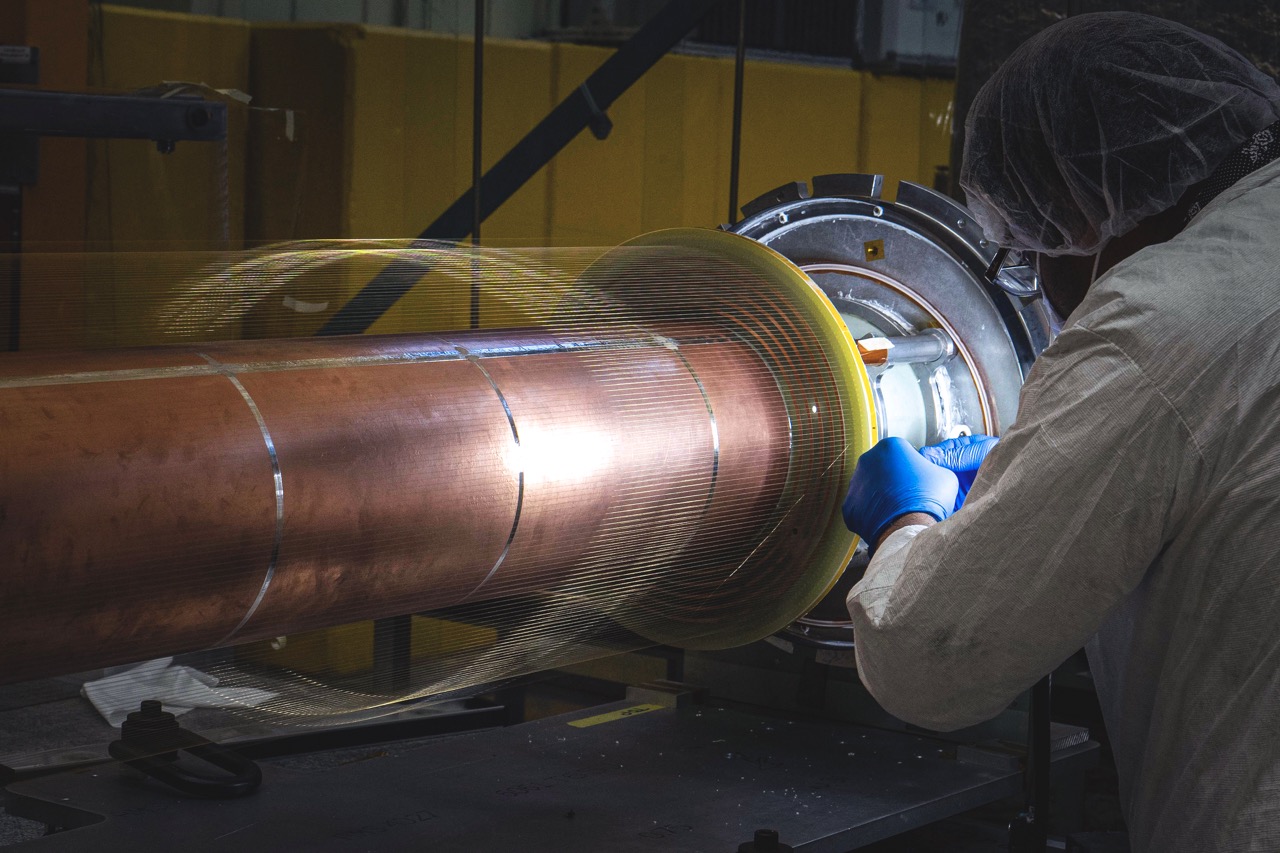Newton would be impressed. Probably not surprised.
Pretty much every school kid knows that the work of the 17th Century British physicist and mathematician was instrumental in coming up with the idea of gravity as a force of attraction between particles of any size in the universe, like the Earth and a hydrogen atom. Whether Newton did it sitting under a tree and watching an apple fall, down, may be true or just a pleasant little story.
But as science progressed and physicists came up with the idea of the Big Bang and a universe filled with matter and antimatter, they wondered if an antiapple would fall up, not down.
Now, thanks in part to the work of scientists at the TRIUMF particle accelerator centre in South Campus down the street from Wesbrook Village, we know at least a little more about the mysteries of antimatter.
To begin, researchers at TRIUMF worked with other Canadian researchers from UBC, Simon Fraser University, the British Columbia Institute of Technology, the University of Calgary and York University in Toronto to build an antimatter gravity detector at TRIUMF.
“Simply put, it couldn’t have been built anywhere else in Canada,” Dr. Makoto Fujiwara, TRIUMF’s senior scientist, said in a news release about the detector and its role in an important antimatter experiment.
Once built, the detector was shipped to Geneva, Switzerland and the European Organization for Nuclear Research, better known as CERN. CERN does high-energy physics research using the world’s most powerful particle accelerator, which operates in an underground ring 27 km long. The accelerator fires beams of atomic particles like protons at speeds close to the speed of light and scientists watch what happens when these super-fast beams smash into each other.
The detector would allow researchers to dig deeper, but not before overcoming some challenges.
Antimatter is devilishly hard to work with. When an antiproton runs into a proton, both disappear in an instantaneous flash of energy. So, trying to work out if antimatter follows the laws of gravity and falls down has been a struggle.
The goal has not just been to see if an antiproton falls up down. The real mystery of antimatter is why there isn’t more of it, a lot more of it, in the universe. That is because physicists figure that the Big Bang should have created equal measures of matter and its anti-sibling.
By learning more about antimatter, scientists hope to answer that question. As a news release from TRIUMF says, “Testing the physics of antimatter with precision may provide a smoking gun as to where all the antimatter went.”
CERN has been creating and studying antimatter for years and in addition to the particle accelerator, it now has an instrument that can slow down antimatter so scientists can study it.
Using the antimatter gravity detector built at TRIUMF, CERN researchers trapped antimatter hydrogen in a magnetic bottle and watched carefully what happened when they released the antihydrogen from the bottle.
And like a regular hydrogen atom, it fell down, not up, toward the Earth.
As expected, TRIUMF researchers can say triumphantly, “antimatter falls downwards.”
In case you think so what, well, the experiment and the result made the pages of Nature. In more scientific prose in the Nature article, the researchers concluded that “the dynamic behaviour of antihydrogen atoms is consistent with the existence of an attractive gravitational force between these atoms and the Earth.”
The experiment at CERN was conducted by ALPHA, the Antihydrogen Laser Physics Apparatus, an international group of researchers.
And the Canadian team that built that antimatter gravity detector is known as ALPHA-Canada.
WARREN CARAGATA IS A MEMBER OF THE CAMPUS RESIDENT NEWSPAPER COMMITTEE.
Resources:
TRIUMF: https://www.triumf.ca/
CERN: https://home.cern/
NATURE on the antimatter gravity experiment
https://www.nature.com/articles/s41586-023-06527-1
